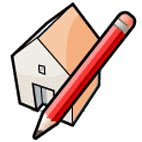Català - Castellano
When XREFs are big files or have big image files attached to it they might become a problem if your computer is not very powerful. As I mentioned on a previous post, you can optimize performance by using the old XREF Manager instead of the new External References Palette.
One more way to improve performance is to tell AutoCAD to not show a preview of the XREF when using the "Select Reference File" pop up window. I can't tell right now which versions have this options, but I can confirm that ACA 2009 has it. See the picture below.
 Unchecking the option "Preview" under the "Views" menu on the upper right side of the Dialog will stop showing XREF Previews making everything faster and smoother.
Unchecking the option "Preview" under the "Views" menu on the upper right side of the Dialog will stop showing XREF Previews making everything faster and smoother.
Show me more...
























